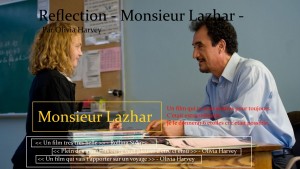Reflexion – Monsieur Lazhar:
Mes pensees de “la scene le plus ‘coup de coeur'”:
 L’image Original: https://i.ytimg.com/vi/tUXzWQiqZoM/maxresdefault.jpg%5B/caption%5D
L’image Original: https://i.ytimg.com/vi/tUXzWQiqZoM/maxresdefault.jpg%5B/caption%5D
My Riverside Rapid Digital Portfolio
Mes pensees de “la scene le plus ‘coup de coeur'”:
 L’image Original: https://i.ytimg.com/vi/tUXzWQiqZoM/maxresdefault.jpg%5B/caption%5D
L’image Original: https://i.ytimg.com/vi/tUXzWQiqZoM/maxresdefault.jpg%5B/caption%5D
In science we were given the chance to create a project with ISS. In our groups we each had to think of an experiment that we could conduct in micro gravity. Here’s what our group chose to do:
In our group, we decided to take bacteria and bad bacteria to see how it would react in micro gravity. We then specifically chose to use Bacteria Vibrio Chlorae with Pili. We chose to do this experiment to see if they would produce faster, or slower to help us determine more the difference of how they react in micro gravity to being in gravity, to help get a better understanding of the bacteria itself. This understanding could help us with many things, not only in science 9, 10… But in life as well if one of us becomes a scientist, or for many scientists who may have this question now, or even other students.
To find a great experiment, we thought more about our question, with lots of research from multiple sources on how we could conduct the experiment, count the Pili, and how we could benefit from this experiment. We then got contact with Miguel Gutierrez, – a SFU graduate in molecular science – who we determined would help supply us with the bacteria that we needed. We also attended the SSEP program at Heritage Woods Secondary School to open up new ideas and to understand the concepts that we planned to do our experiment on.
 SSEP 2016 http://ncesse.org/wp-content/uploads/2010/06/slider-3-1-SSEP-P2-1.jpg%5B/caption%5D
SSEP 2016 http://ncesse.org/wp-content/uploads/2010/06/slider-3-1-SSEP-P2-1.jpg%5B/caption%5D
This problem could be solved by our experiment idea of having two different types of bacteria sent up into micro gravity to see how they react together, like the two that we choose, Bacteria Vibrio Cholerae and Pili. We want to see how these two different bacteria’s will react together in micro gravity. To help solve our problem, like it was mentioned in the previous. This will also help achieve a better general understanding of how bacteria works, and reacts in not only micro gravity, but also in gravity itself, and to see how much of the Bcteria Vibrio Cholerae was gone, and how much the Pili has grown.
To create the best proposal we could, we wrote up our draft for the first deadline, each taking different parts that we felt best suit each of us – to get the best possible result – and handed that in to be reviewed. We then went to Susan Henderson, to help us review our proposal, and to show us how to properly use Microsoft Word in order to create proper citations. We then re-reviewed our proposal, adding in all the proper citations. Then, that then went on to Claudia Durand to review once again our current proposal, and to give us more corrections on places in our proposal where she thought that we could improve.
The process of creating our proposal went well. I think that our group could have worked more on our communication skills, to make the work load that we had more even. But, we did come out with a strong idea, and well made proposal in the end. I feel that our group did well on going to spend the extra time out of our lunches, or even on pro d days, to get in that extra effort to really try to make our proposal as good as it can be. I feel that our group also did well in reaching out to outside sources to really get an even better sense of what we were doing. With copious amounts of support from everyone whom I mentioned, and lots of encouragement from our science 9 teacher – making this all possible – Mr. Robinson, I feel that this project went very smoothly. In the end I think that we have a very good proposal, and that now we know how to really work well together.